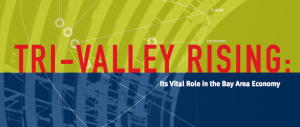
A number of our research reports laid strong foundations for current and future policy change through the Bay Area Council and its partners. The organization also brought on a new President, Micah Weinberg, PhD, who has been managing operations as Sean Randolph, PhD has stepped into the role of Senior Director after a successful 15-year run as President. 2015 also saw the launch of the Institute’s new digital presence with a new mobile- and tablet-enabled website which allows its reports to be read online, their key statistics and quote shared easily through social networks. Thanks to Wells Fargo, Kaiser Permanente, TMG Partners, and the North Bay Leadership Council for their support of this project.
Next year is teeing up as one in which the research, convening, and public education activities of the Institute will be even more vital as the challenges that we face are at a crisis point. Regional housing has never been more unaffordable and our transportation networks have never been more congested. To an extent, these are the externalities of the success of our region, but this economic success should embolden and empower us to tackle these perennial challenges with renewed vigor. In doing so, we must understand the facts, employ best practices and work together. The Economic Institute – with its board comprised of top leaders from all sectors of our region – remains uniquely positioned to play a leading role in this effort.
Major Projects, Major Impact
The Institute completed more than a dozen major projects during the year. These projects each include a report or reports as well as expert roundtables, large public events, and traditional and social media coverage. Four major projects in particular were among the most impactful and most clearly set up future work.

The Bay Area Regional Economic Strategy– The Metropolitan Transportation Commission funded the Institute to provide input from business and civic leaders that would add a significant focus on sustained economic growth to regional planning. Ultimately this project resulted in a “Roadmap for Economic Resilience” that was much broader in scope and will serve as the basis for advocacy by BAC and its partners for years to come. This report received a great deal of attention in the press, and many state legislators have contacted us to beginning putting its recommendation into bill form.
21st Century Infrastructure– PG&E and AT&T were among the supporters of this project which comprehensively laid out the need for better communications and energy infrastructure in the region as well as plans to better fund and regulate these public goods. The report laid the groundwork for significant policy successes including on AB57 which improved the permitting process for new cellphone towers. Tom Doughty, Director of State Regulatory Strategy for Cal ISO, called it the best interest-group funded report he had ever read. This was one of many examples of successful collaboration between the policy and research teams at the Institute, in which we leveraged our broad network of corporate, public, non-profit and academic leaders to produce a series of civic-minded recommendations to improve the economy and quality of life in the region.
Surviving the Storm –Though California continued to experience one of its worst droughts of all time, an equal threat to our region is presented by a major storm event for which the Bay Area is overdue. In fact, the long-time drought increases the damage such a storm would cause. In addition to the human toll, the Institute estimated that a major storm event would cause $10 billion in economic damage to the Bay Area, an amount that rivals that caused by the Loma Prieta earthquake in 1989.
Tri-Valley Rising – The Tri-Valley is an integral component of the Bay Area economy. With its robust research and development infrastructure and its growing entrepreneurial environment, it is no longer just a nice place to live—it has become a vital node in the Bay Area innovation system. The more connected the Bay Area population is with the multiple job centers in the region, the more flexible the region’s economy can be in connecting skilled workers with appropriate jobs.

Thought Leadership on Many Critical Issues
We have many additional projects soon to be published or underway currently. This includes one looking at the “megaregion,” which includes Sacramento and the northern San Joaquin Valley. This area has many critical economic connections including the movement of goods and people, and there are megaregional issues – such as the improvement of transportation networks – for which we need to be planning. We are also following up on our successful report looking at the economic connections between the EU and California with one focused on cross-border entrepreneurship. We’ll also be issuing reports focusing on advanced manufacturing, the funding and efficiency of the state Medicaid program, the innovation occurring on University of California campuses, and the latest strategies and tools for impact investing.
Upcoming major events include our annual Regional Economic Forecast on January 15th, sponsored by Accenture and hosted by John Williams, our board member and the chair of the San Francisco Federal Reserve Bank. Board member Mayor Ed Lee will also be hosting the next meeting of the Board of Trustees of the Economic Institute at San Francisco City Hall on January 7th. This follows meetings hosted by Mayors Liccardo of San Jose and Schaaf of Oakland, also board members who are engaged with our work.